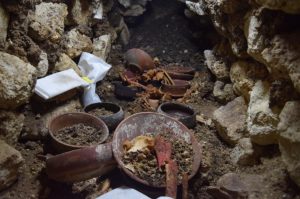Archaeologists have uncovered the oldest royal tomb at the Classic Maya city of Waka’, known also as El Perú, northern Guatemala.

Previous research at the site has revealed six royal tombs and sacrificial offering burials dating to the 5th-7th centuries AD. However this particular tomb has been dated by ceramic analysis to 300-350 AD, making it the earliest known royal tomb in the northwestern Petén region of Guatemala. The necropolis is believed to have been sanctified by the burial of this individual from the royal class, as the Maya people treated their divine rulers as living souls after death. In the Classic period, this royal city of Waka’ commanded major trade routes running north to south and east to west. It is believed that this tomb dates to the early years of the Wak royal dynasty, which is is thought to have been established in the second century AD. The researchers further suggest that the individual who’s remains were discovered within the tomb, a mature individual, might have been King Te’ Chan Ahk – ruling in the early fourth century AD. The identification of the tomb as royal is based on the presence of a jade portrait mask depicting the ruler with the forehead hair tab of the Maize God. Archaeologists have discovered such a mask under the head of the ruler. Moreover, 22 ceramic vessels, spondylus shells, jade ornaments, and a shell pendant carved as a crocodile have been discovered within the tomb.

(after PhysOrg, Daniel Marken, Proyecto Arqueológico Waka’ & the Ministry of Culture and Sports of Guatemala)